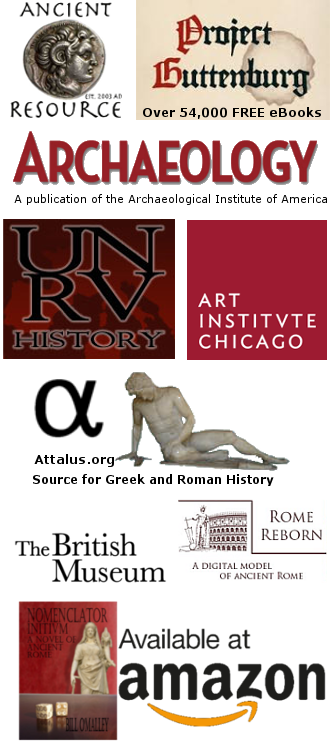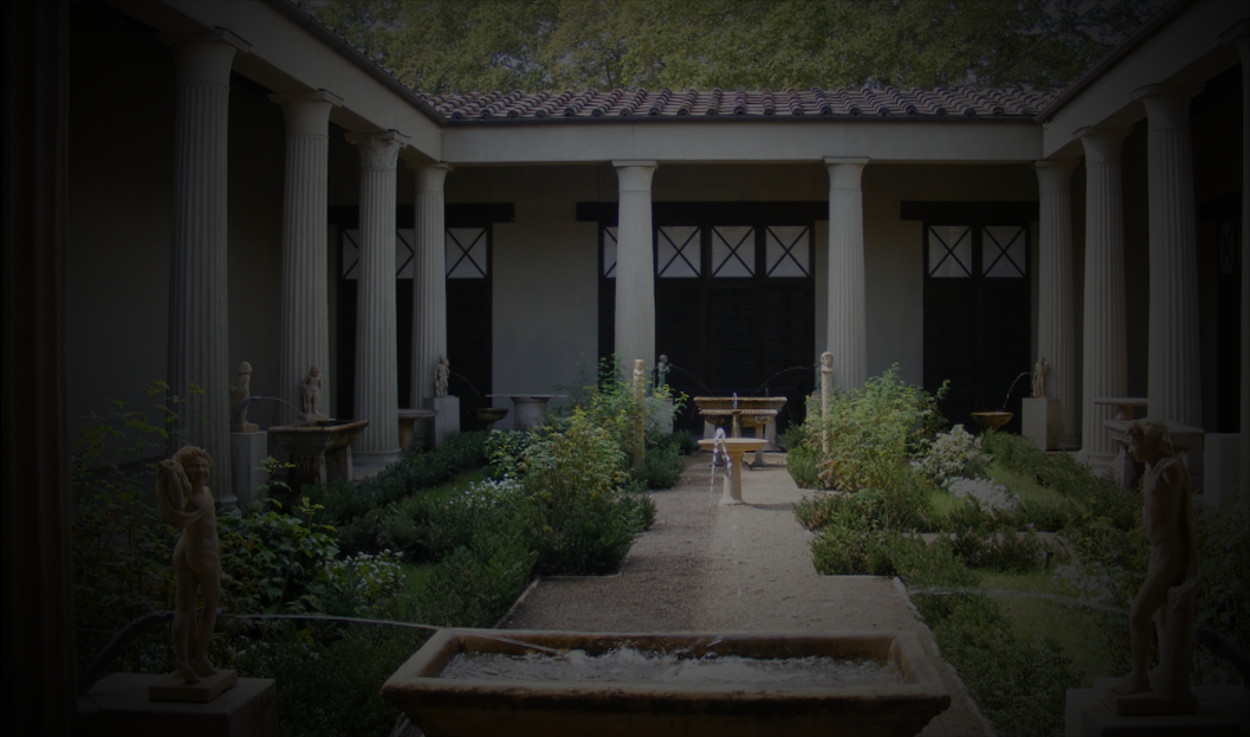
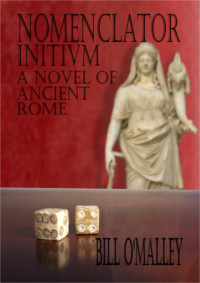
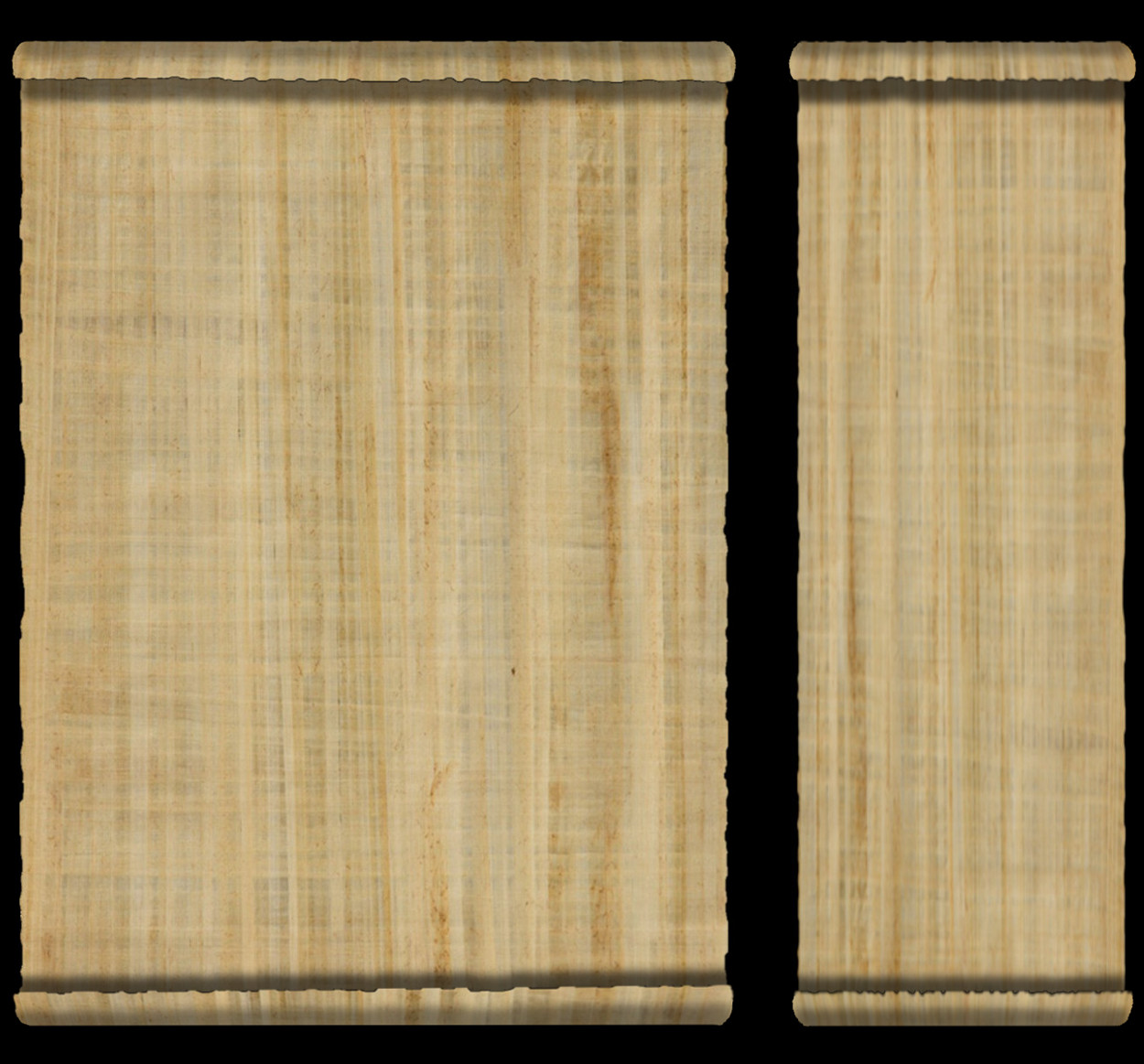
Ancient Roman Housing
The earliest dwellings of the Romans were the traditional peasant huts of the Latins. These huts were single roomed dwellings with wattle-and-daub walls and straw roofs. The Romans revered such a hut on the south-west corner of the Palatine Hill as the reputed home of Romulus, the legendary founder of their city. In Nomenclator: Initium, Polybius scoffs at the idea that the rude hut was that of Romulus (born c. 771 BC, died c. 717 BC), since it's mud and straw construction and tendency to catch fire demanded constant repairs, leaving none of the original hut remaining.
 By the time of Caesar, most Romans lived in three types of homes: The insulae, the domus, and the villa. It has been estimated that the city of Rome had a population of between 800,000 and 1,000,000, in an urban center of about sixteen square miles, giving it a population density on par with modern Mumbai, India. That many people in such a small area forced the development of the Roman insula, a multistoried apartment building. This type of building housed most of the lower or middle-class Plebs. To learn more about insulae, click on the picture to the right.
By the time of Caesar, most Romans lived in three types of homes: The insulae, the domus, and the villa. It has been estimated that the city of Rome had a population of between 800,000 and 1,000,000, in an urban center of about sixteen square miles, giving it a population density on par with modern Mumbai, India. That many people in such a small area forced the development of the Roman insula, a multistoried apartment building. This type of building housed most of the lower or middle-class Plebs. To learn more about insulae, click on the picture to the right.
 Wealthier plebs and patricians most often lived in either domus or villas. The domus most often contained two open spaces in the center of the house with an opening in the roof above. Often businesses, referred to as taburnae were attached to the front or sides of the home but did not have doors that communicated with the home itself. The largest room in the domus was the atrium, a large open space near the front of the home with an opening in the roof that allowed rain water to fall into the impluvium in the center. At the rear of the house was the peristylum, or colonnaded garden. To learn more about the domus, click on the picture to the left.
Wealthier plebs and patricians most often lived in either domus or villas. The domus most often contained two open spaces in the center of the house with an opening in the roof above. Often businesses, referred to as taburnae were attached to the front or sides of the home but did not have doors that communicated with the home itself. The largest room in the domus was the atrium, a large open space near the front of the home with an opening in the roof that allowed rain water to fall into the impluvium in the center. At the rear of the house was the peristylum, or colonnaded garden. To learn more about the domus, click on the picture to the left.
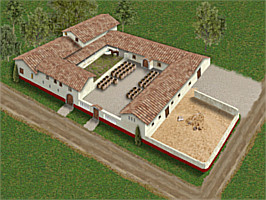 Villas were exclusively occupied by the wealthy and their slaves. These large estates were outside of the city and were usually, at least partially, self-sustaining. Those villas within easy reach of the city were called villa urbana while those further away served as country estates with working farms and were called villa rustica. To learn more about the villa, click on the picture to the right.
Villas were exclusively occupied by the wealthy and their slaves. These large estates were outside of the city and were usually, at least partially, self-sustaining. Those villas within easy reach of the city were called villa urbana while those further away served as country estates with working farms and were called villa rustica. To learn more about the villa, click on the picture to the right.
These links are being provided as a convenience and for informational purposes only; they do not constitute an endorsement or an approval by Nomenclator Books or Bill O'Malley of any of the products, services or opinions of the corporation or organization or individual. Nomenclator Books and Bill O'Malley bears no responsibility for the accuracy, legality or content of the external site or for that of subsequent links. Contact the external site for answers to questions regarding its content.
